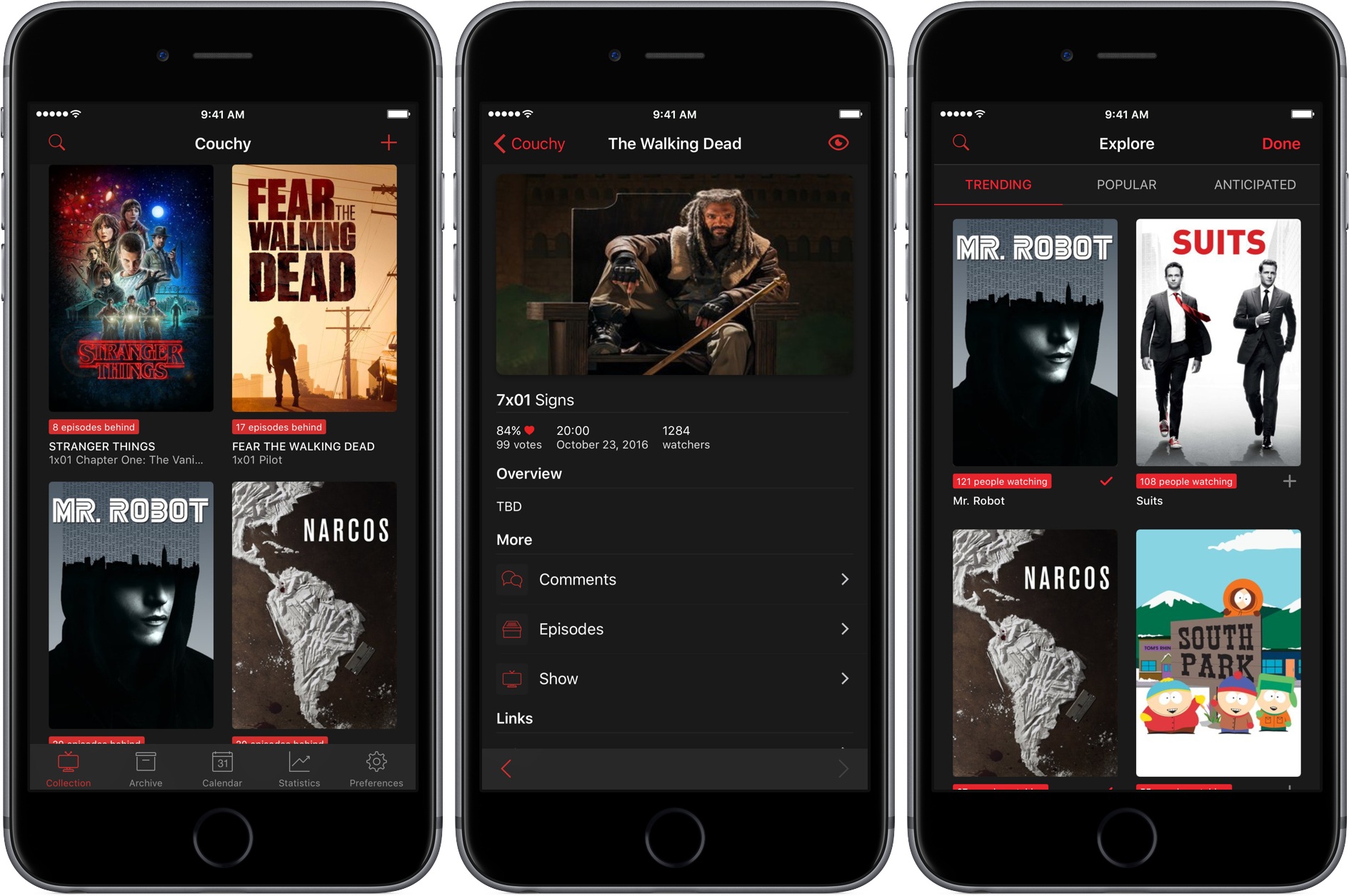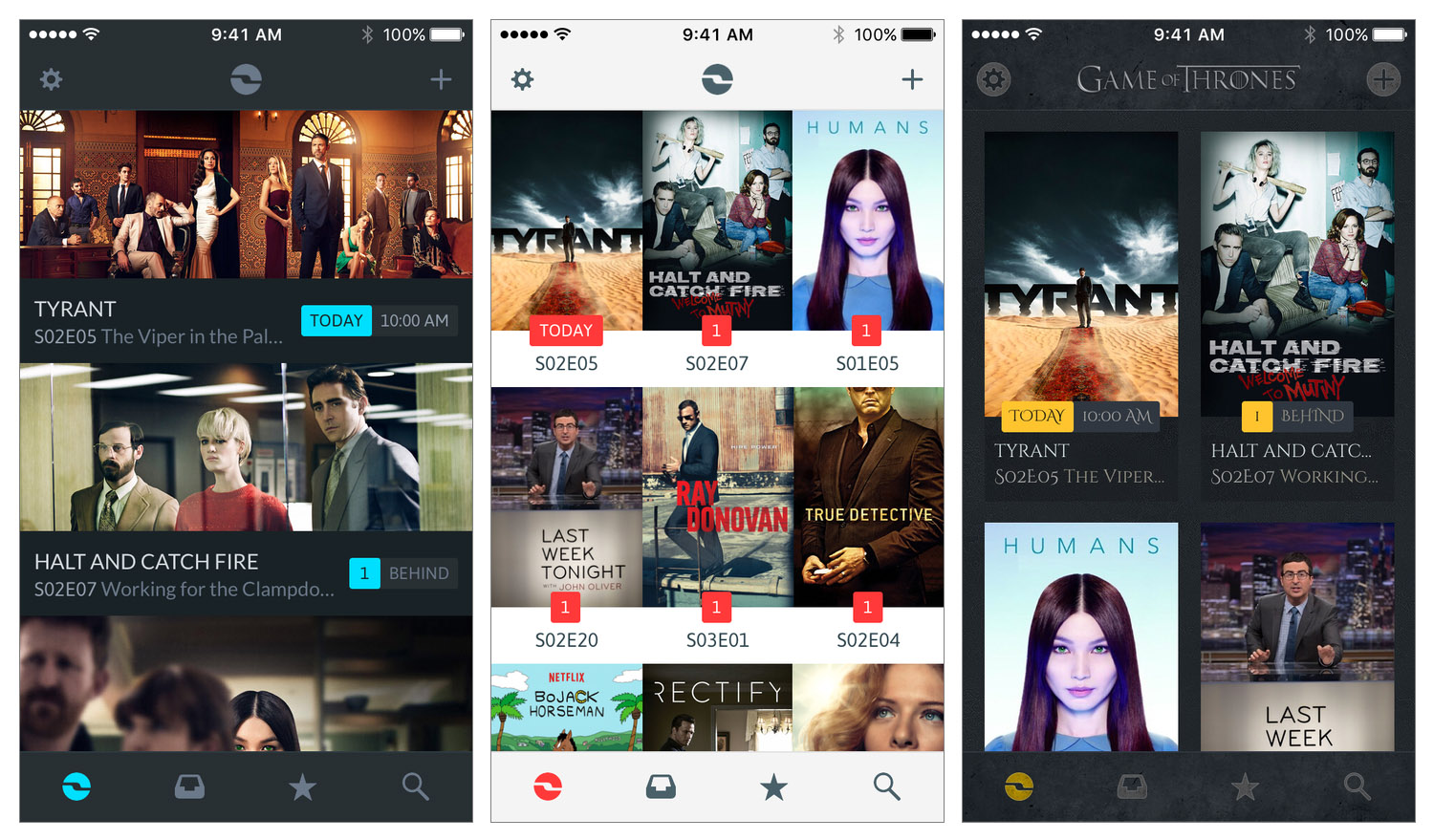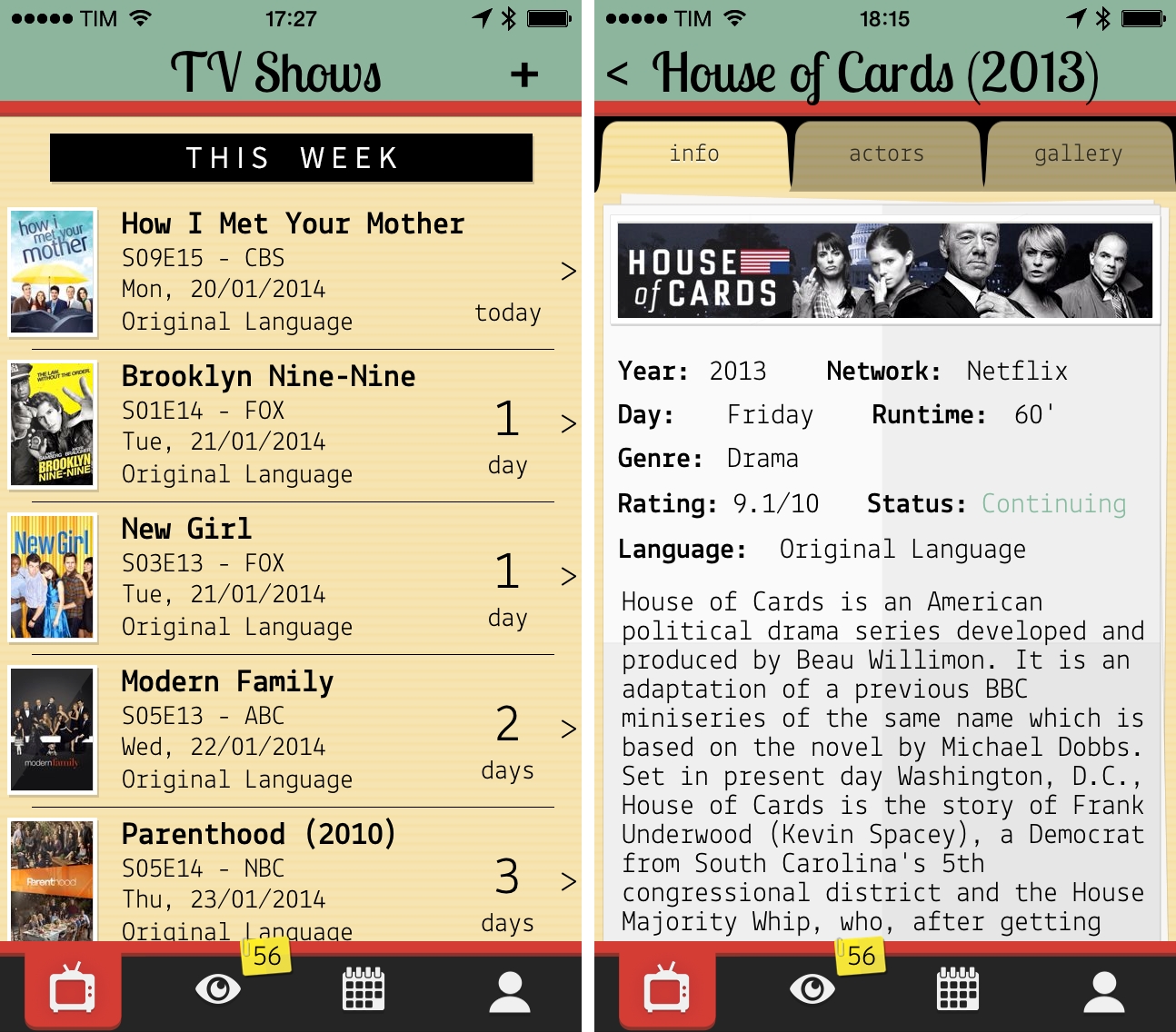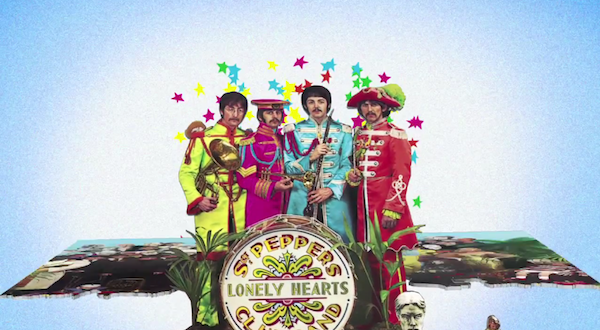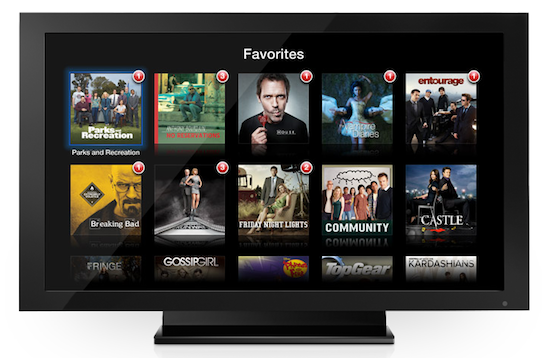Couchy by Sven Bacia is a brand new iOS and iMessage app for tracking your favorite television shows. Sven’s app first came to my attention when I was researching the iMessage app roundup we published earlier this week. The app wasn’t approved in time to include in the roundup, which has given me time to take an even closer look at the main app, which I like a lot.
Posts tagged with "tv"
Tracking TV Shows with Couchy
Open Casting Call Posted for Apple’s ‘Planet of the Apps’ Reality TV Show→
Earlier this year it was announced that Apple was planning to launch its first original TV series about the “app economy.” Now, Apple has posted an open casting call for the unscripted reality series, which we now know is called Planet of the Apps.
The show is being co-produced with Propagate, a newly launched production company co-owned by Ben Silverman, best known for The Biggest Loser, and Howard T. Owens of MasterChef Junior fame. Will.i.am will also have a hand in producing Apple’s reality series.
The casting call is open to legal residents of the US, and it requires you to have a functioning app (for iOS, macOS, tvOS or watchOS) by October 21. The show will also incorporate elements of mentorship, marketing and promotion (“featured placement in the App Store at the end of the show”), and even funding from “top-tier VCs”.
Executive producers will.i.am, Ben Silverman, and Howard Owens are teaming up for an unscripted series about the world of apps and the talented people that drive its innovation. They’re looking for developers with the vision to shape the future, solve real problems, and inspire change within our daily lives. “We can really tell their stories as we explore how apps are developed and created and incubated,” says Silverman.
If you’re interested in potentially applying to be a part of Planet of the Apps, you can visit their website which contains more information on the requirements and application process.
Shooting takes place from “late 2016 to early 2017” with no official broadcast date just yet, though the website does note that the show will “reach millions of viewers around the world on Apple platforms”. Also yet to be announced are the tech experts and mentors, and these will be announced in “the coming weeks”.
I’m not sure why they’re calling the series “Planet of the Apps”, a name which appears to inexplicably riff on the “Planet of the Apes” science fiction franchise. I hope that by the time the series goes to air it has a different, better, name.
Tracking TV Shows with iShows 2: Welding Great Design with Extensive Customization
I watch a lot of TV – almost certainly too much TV. Years ago I used to keep track of the TV shows I watched mentally and through a TV guide from the Saturday newspaper. But as I started to watch more TV it became harder to keep track of when shows air. Fortunately, I started to use iPhone TV tracker apps, which make it effortless to keep track of your favorite TV shows. I’ve probably used 4 or 5 different apps for a solid period of time, and this February I switched to what I think is the latest and greatest TV tracker app: iShows 2, which officially launches today in the App Store.
I had briefly used the original iShows app, but I never permanently switched to it. Whilst the design was quite good, it had this very odd layout that left a gap on the side of the screen which (as petty as it sounds) I couldn’t get over. Somewhat embarrassingly the other issue I encountered was that I never discovered some of the gestures, without which the app was a lot harder to use. Some of those gestures persist in iShows 2, and I’ll discuss them shortly.
Prior to switching to iShows 2 whilst it was in beta, I had been using iTV Shows for around a year. It never looked quite as good as iShows or TeeVee 3 (another popular and very pretty app), but I preferred the way iTV Shows worked. I’m still a fan of iTV Shows, but I’ve been convinced (after months of use) that iShows 2 is the better option for me.
Tracking TV Shows with TV Files
My experiment to add calendar events for TV shows I watch failed miserably. Because of programming schedules that change often and holiday breaks I can’t always predict, I ended up with a calendar full of repeating weekly events for episodes that had been delayed. Therefore, I started looking for a good TV show tracker app for my iPhone and iPad, and lately I’ve been using TV Files, developed by Italian team Whale True. Read more
Vintage Apple Ads On YouTube→
Husain Sumra:
Old Apple commercials from the 1980s have been resurfacing on YouTube channel EveryAppleAds over the past few days, offering an extensive look at vintage Apple advertising that is normally overshadowed by Apple’s famous Super Bowl commercial “1984”.
The channel’s Recent Uploads section is where you can easily to watch all the videos. Some of them are utterly “vintage” in the way they’re meant for an audience who couldn’t have decades of computer experience like we do today; others are still fascinatingly modern in how they imply the product’s superior functionality in a casual, familiar setting. A great find.
Televised→
Televised
I don’t watch American TV shows as soon as they’re aired, mainly because, being based in Italy, I don’t have access to legal TV subscription. However, I do like to “stay in the loop” with news and episode dates so I can later download everything in iTunes. Televised is a new iPhone app developed by Robocat that wants to provide a way to easily catch up on “status updates” for TV shows you’re interested in.
Televised takes a very visual approach. TV shows are presented as posters of the current season and the entire app features a custom design by Michael Flarup that is a mix between the dark style of Plex and a remote. In fact, you can tap on the hamburger button in the top left to open a section with buttons for Settings, Help, and “Add Shows”. Unlike most iOS apps, this section doesn’t open from a side, but from the top, with an animated light reminiscent of a TV remote. The design is very particular, but I found it to be slightly confusing coming from apps such as Facebook or Rdio (and really, just about any other app these days), which use a standard side-panel navigation. However, considering Televised’s highly custom approach to navigation, sounds, and modal views, I think the alternative take fits with the rest of the app.
The core element of Televised are the show preview thumbnails. You can tap on one to bring up a modal “card” that comes in the foreground with a nice 3D animation. Each card contains information about a show’s upcoming episode with summary, background photo, airing date, and three buttons at the bottom. These buttons let you share an episode, turn on notifications (which I haven’t been able to test), and “View on IMDB”. Televised uses data from TheTVDB, but if you have the IMDB app installed it’ll try to display a selected episode’s information on the service. I say “try” because – I don’t know if this is related to Televised or IMDB itself – in my tests I haven’t always been redirected to an episode’s proper page.
Televised focuses more on the “upcoming” aspect of TV shows rather than providing a fully searchable archive of a show’s episodes. There are some nice touches (the static effect as background for modal cards is one of them) and some aspects I can’t comment on (such as the future reliability of notifications), and the app does undoubtedly look good on the Retina display. I recommend checking out Televised on the official website, where there’s also a promo video.
Apple Posts New Siri Ads Featuring John Malkovich
Following a series of “celebrity ads” for the iPhone 4S’ voice-based assistant released last month, Apple today posted two new Siri TV commercials featuring actor John Malkovich. The ads, titled “Joke” and “Life” show Malkovich casually talking to Siri with short sentences and a series of single words such as “weather” or “evening”, perhaps in an effort to showcase both Malkovich’s particular attitude and Siri’s capability of handling short commands with seemingly no context (“evening” returns a series of calendar appointments, “linguica” displays local restaurants).
According to a recent study, the previous commercials featuring Zooey Deschanel and Samuel L. Jackson fared well with viewers, who, reportedly, were highly receptive to familiar faces of celebrities illustrating the latest features of the iPhone in a familiar, almost casual setting. MacRumors has put together a number of possible responses Siri can give to Malkovich’s query – tests performed with the question asked by Samuel L. Jackson showed that, in practice, Siri was a little less accurate than its primetime counterpart.
The new Siri ads are available on Apple’s website, YouTube channel, and we have embedded the official versions below.
Read more
Apple Promotes The Beatles With New TV Advert, Free iBook
Late yesterday Apple posted a new TV ad online that promotes The Beatles on iTunes. The ad, called “Covers”, is a 30 second piece that features a number of their album covers animating and morphing into one another to the tune of ‘Magical Mystery Tour’.
It follows yesterday’s release of ‘The Beatles Yellow Submarine’ a free, interactive iBook that is available exclusively on the iBookstore.
This enchanting illustrated book captures the same magical spirit found in the film. The Beatles’ journey to save Pepperland from the music-hating Blue Meanies is filled with surrealistic humor, wit, and clever references to The Beatles’ song titles and lyrics. In this iTunes exclusive, clips from the movie have been included throughout and can be viewed either embedded in the page or at full-screen. The book also contains interactive animations as well as sound effects and music clips.
Jump the break to view the new ad, you can download ‘The Beatles Yellow Submarine’ for free on the iBookstore.
[Via MacRumors]
The “Apple TV Set”
Jean-Louis Gassée notes how the “Apple television” that’s been long rumored among Apple fans and the tech press will have to face two problems: architecture and implementation.
As many imagined, the device would look something like this:
Imagine a true plug-and-play experience. One set with only two wires: power and the cable TV coax. Turn it on, assert your Apple ID credentials and you’re in business.
But then it would come down to getting cable channels into the set:
Large carriers, such as Comcast, are known as Multiple System Operators, MSOs, with an emphasis on the “M”. They’re a patchwork of acquired systems that have never needed to be compatible. This would either restrict the TV set to a small number of carriers, or make the product more complicated and prone to more bugs — and more field tech visits.
And on top of that, Apple would have to solve the problem of easily troubleshooting a 50-inch screen, or simply figure out a way to get people to upgrade to newer models of “Apple TV set” every couple of years:
We’re willing to upgrade our laptops, smartphones, and tablets every year or two because Moore’s Law keeps improving the CPU and other electronics at the rapid rate that made the computer industry’s fortunes. An integrated Apple TV set wouldn’t benefit from better electronics as naturally as an iPhone does…unless, of course, the tiny iOS computer is implemented as an easily accessible plug-in module.
I’d argue that the television market is so variegate, and potentially lucrative, that there’s more to figure out and correctly implement than U.S. cable providers and MSOs. Looking at Apple now, it’s hard to see a company willing to disrupt a market with a brand new, premium device…available exclusively in the United States. Even the Apple TV, “not part of the stool” and still considered a hobby, was released in the United States and Europe last year. Then look at the iPhone. It took almost four years to get there, but as it turns out the majority of profits now come from regions outside Americas (and iPhone is “key driver” of Apple’s revenue in Greater China – more context here and here).
The problem with the Apple TV set isn’t an “American cable company” (you name it) – it’s the television market as a whole. If we take in account the segments and population that can afford an HDTV nowadays – assuming it falls somewhere in between the $500 - $3000 range – it’s easy to see how Apple will have to make a product that ultimately just works with any television content provider in the United States, Europe, and Asia. Why would they ignore those markets?
There are greater issues to solve and differences to consider in the international TV market. Just a few examples: Italy still switching from analog to digital TV, satellite’s popularity in many areas of Europe, or some ISPs’ offerings with Internet/ TV packages. Supposedly, Apple will have to come up with a solution to work around these, in several countries. Italy may not be Apple’s finest source of revenue, but Europe/Japan/Asia-Pacific combined made for $14.94 billions of revenue in Q3 2011. I’m just assuming some of these Apple customers would also be interested in a TV set from Apple.
We don’t know what Apple has in mind, we can speculate on the company’s margins for such a device – we can only imagine that there is a market to disrupt because the current television sets are too difficult to configure and troubleshoot, with different user experiences and fragmented interfaces, store fronts, or even remotes.
I believe the question isn’t what will the TV set from Apple look like, as we can make a pretty accurate guess about that. Rather, I’d speculate on how many markets Apple is willing to enter at once, and its timing.



